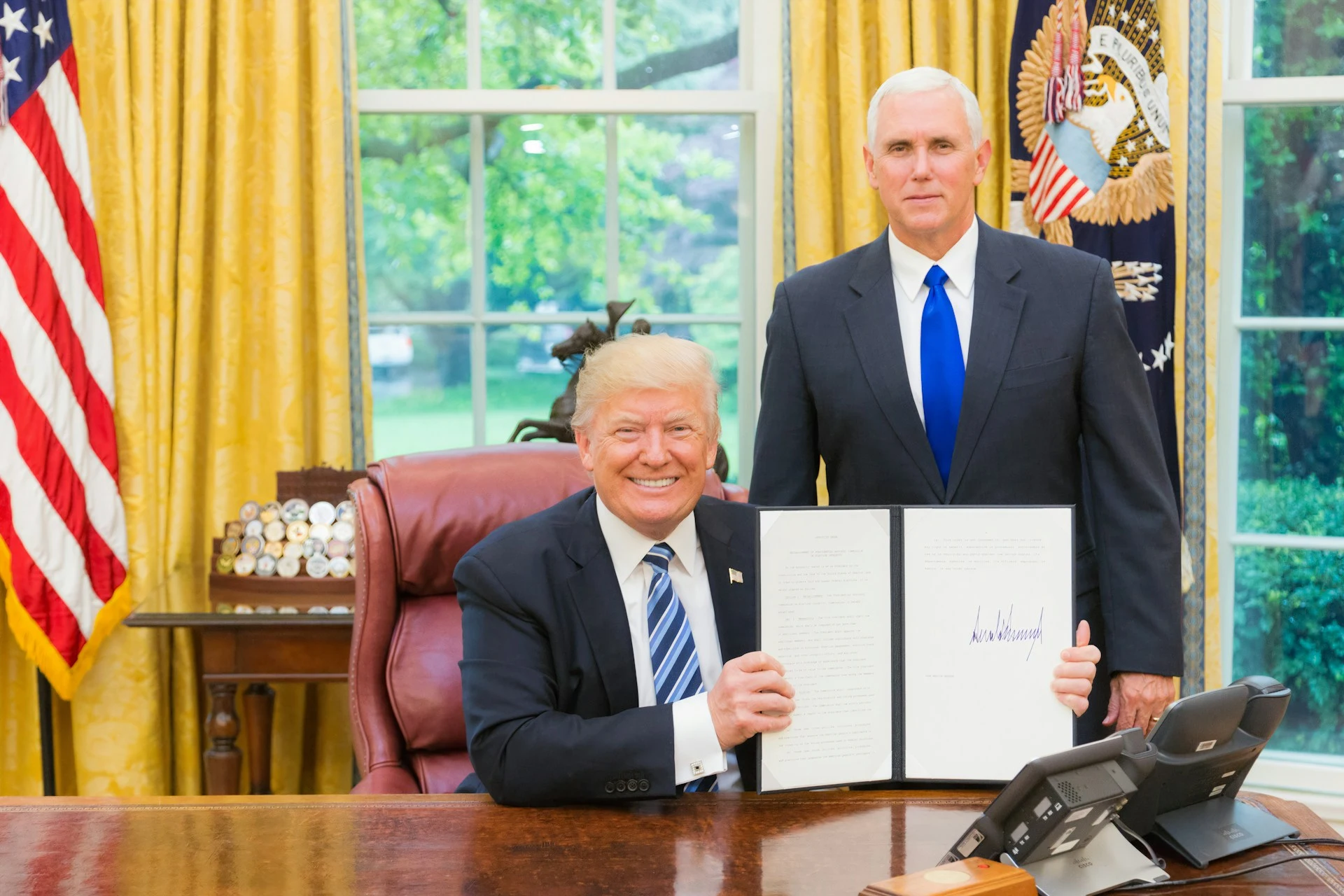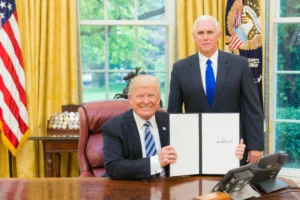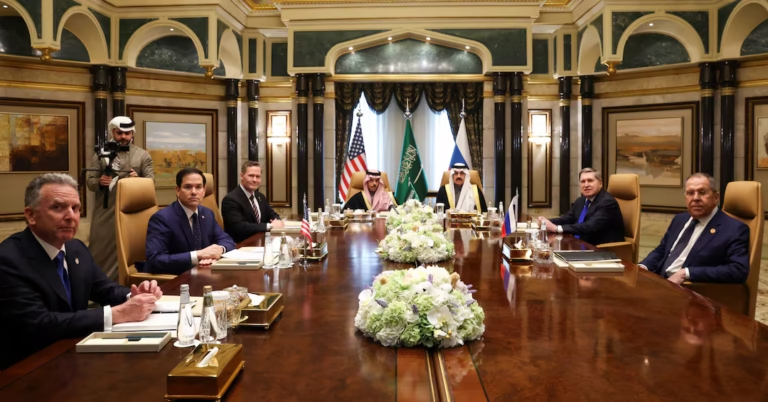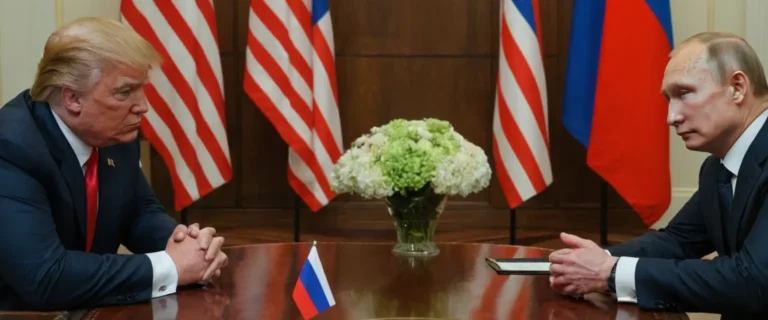
Trump signing trade deal
President Donald Trump’s aggressive push for reciprocal tariffs has ignited a fiery debate about their potential to reshape the U.S. economy and combat inflation. By mirroring the import taxes that other nations impose on American goods, Trump aims to level the playing field, reduce trade deficits, and incentivize domestic production. While critics warn of short-term price hikes, proponents argue this strategy could fortify America’s economic independence and curb inflationary pressures in the long run. Here’s how Trump’s tariff blueprint could redefine prosperity for the U.S.
1. The Vision: Fair Trade Through Reciprocal Tariffs
Trump’s “Fair and Reciprocal Plan” targets countries like India, China, and the European Union, which impose higher tariffs on U.S. exports than the U.S. charges on their goods. For example, India’s 100% tariff on Harley-Davidson motorcycles contrasts sharply with the U.S.’s 2.4% levy on Indian bikes212. By matching these rates, Trump aims to:
- Negotiate better trade terms: Force trading partners to lower their barriers or face higher U.S. tariffs.
- Protect American industries: Shield domestic manufacturers from foreign competition, encouraging reshoring of jobs10.
- Generate federal revenue: Tariffs could raise $610 billion over a decade, offsetting tax cuts and reducing deficits.

2. Economic Benefits: Revitalizing American Manufacturing
The U.S. trade deficit hit a staggering $918 billion in 2024, driven by over-reliance on imports from China, Mexico, and Canada. Reciprocal tariffs aim to reverse this trend by:
- Boosting domestic production: Automakers like GM and Ford, which rely on Mexican and Canadian parts, could shift supply chains stateside, creating jobs.
- Leveraging energy independence: Canada supplies 20% of U.S. oil imports. Tariffs could incentivize domestic energy production, stabilizing fuel prices.
- Strengthening key sectors: Steel and aluminum tariffs added 1,800 jobs in 2018, though at high consumer costs. A refined approach could optimize this balance.
3. Inflation Dynamics: Short-Term Pain for Long-Term Gain
Critics warn tariffs could spike prices—gasoline by 50 cents per gallon, cars by $3,000, and groceries due to Mexico’s dominance in produce12. However, Trump’s team argues:
- Temporary inflation: Deutsche Bank estimates a 0.25–0.5% rise in core inflation, manageable alongside Fed rate adjustments.
- Consumer resilience: With unemployment at 4.2%, wage growth could offset higher costs11.
- Global recalibration: A weaker peso and yuan may lower import costs over time, easing price pressures.
4. Strategic Leverage: Avoiding a Full-Blown Trade War
While retaliatory tariffs from Canada, Mexico, and the EU loom, Trump’s negotiable stance offers room for deals. For instance:
- Delayed tariffs: A 30-day reprieve for Canada and Mexico secured concessions on border security and drug trafficking812.
- Focus on China: A 10% tariff on Chinese goods targets fentanyl precursors, pressuring Beijing without immediate retaliation912.
- VAT adjustments: Addressing Europe’s 21.6% average VAT could force fairer pricing for U.S. exports like cars.
5. The Road Ahead: A Self-Sufficient Economy
Trump’s strategy aligns with broader goals:
- Tax cut extensions: Tariff revenue could fund Trump’s proposed $1.9 trillion tax cuts, stimulating investment.
- Deregulation: Reducing bureaucratic hurdles complements tariff-driven reshoring.
- Global realignment: By challenging the WTO’s status quo, the U.S. could rewrite trade rules in its favor.
Conclusion: A Calculated Gamble for Economic Sovereignty
Trump’s reciprocal tariffs are a high-stakes bet to rebalance global trade, reduce dependency on adversarial nations, and reignite American manufacturing. While short-term inflation risks persist, the long-term payoff—a resilient, self-sufficient economy—could position the U.S. as the undisputed leader of a reshaped global order. As Commerce Secretary nominee Howard Lutnick noted, this plan is about “fairness, growth, and reclaiming what’s ours”.
Reputable Backlinks for Further Reading
- White House Memo on Reciprocal Tariffs
- Details Trump’s “Fair and Reciprocal Plan” and its legal framework.
- Read the White House memo
- AP News: Trump’s Tariff Policy Upends Decades of Trade Rules
- Analyzes global economic risks and the WTO conflict.
- AP News Analysis
- NYT: How Trump’s Tariffs Threaten the Global Economy
- Examines administrative complexities and inflation risks.
- NYT Coverage
- Forbes: Winners and Losers in Trump’s Tariff Strategy
- Breaks down sector-specific impacts and market reactions.
- Forbes Report
- CNN: Reciprocal Tariffs’ Limited Bite
- Highlights investor skepticism and delayed implementation.
- CNN Analysis



